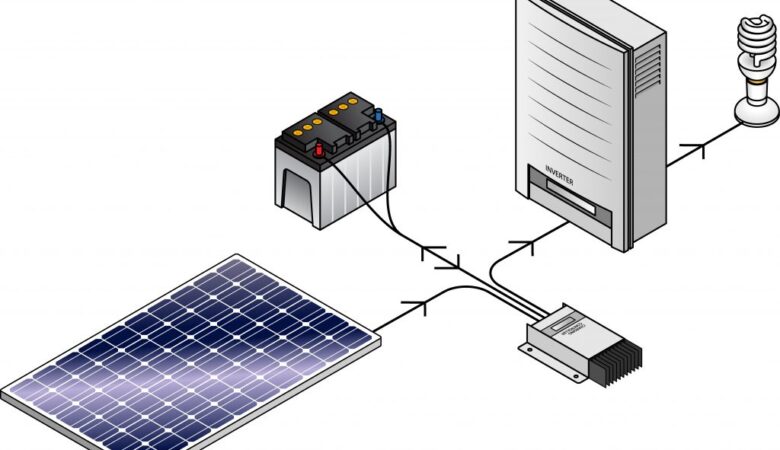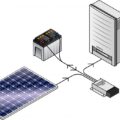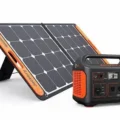Solar energy systems have revolutionized the way we harness power from the sun, offering sustainable and cost-effective solutions for households and businesses alike. One common query that surfaces among those invested in solar is, “Can I add batteries to my solar system?” The answer lies in understanding the pivotal role batteries play in enhancing the functionality and efficiency of solar setups.
“Enhancing your solar system with batteries not only maximizes energy storage but also ensures uninterrupted power supply, contributing to a more sustainable and self-reliant energy ecosystem.”
Introduction to Solar Systems
Solar systems harness the sun’s energy through photovoltaic panels, converting sunlight into usable electricity. These systems comprise various components, including solar panels, inverters, and batteries, each playing a crucial role in harnessing and storing solar energy efficiently.
Understanding Solar Energy
Solar energy is a renewable and eco-friendly source of power derived from the sun. When sunlight hits the solar panels, it triggers a flow of electrons, generating direct current (DC) electricity.
Components of a Solar System
A typical solar setup consists of solar panels, inverters, charge controllers, and batteries. While panels capture sunlight, inverters convert DC electricity into alternating current (AC) for household use. Batteries, however, store excess energy for later use, ensuring continuous power supply even during non-sunny periods or grid outages.
Importance of Batteries in Solar Systems
Batteries act as the backbone of solar systems by storing surplus energy generated during peak sunlight hours. This stored energy becomes invaluable, especially during evenings or cloudy days when solar panels might not produce sufficient electricity.
Role of Batteries in Energy Storage
Batteries serve as reservoirs, storing excess electricity produced by solar panels. This stored energy is then utilized when solar production is insufficient, ensuring a consistent power supply regardless of weather conditions or time of day.
Advantages of Adding Batteries
The inclusion of batteries elevates the functionality of solar systems:
- Energy Independence: Reduced reliance on the grid and increased self-sufficiency in meeting energy needs.
- Backup Power: During grid outages, batteries ensure a continuous power supply, maintaining essential appliances.
- Optimized Energy Utilization: Effective utilization of stored energy during peak demand or low sunlight conditions.
“The integration of batteries transforms solar systems into reliable, round-the-clock energy solutions, amplifying sustainability and resilience.”
Types of Batteries for Solar Systems
Several battery technologies cater to diverse needs and preferences within solar systems:
Lead-Acid Batteries
Traditional and cost-effective, these batteries are suitable for smaller-scale systems. However, they require regular maintenance and have shorter lifespans compared to newer technologies.
Lithium-Ion Batteries
Efficient and durable, lithium-ion batteries offer higher energy density and longer lifespans. They are well-suited for both residential and commercial setups.
Flow Batteries
These batteries excel in scalability and long-term storage, making them suitable for larger installations. They offer the advantage of flexibility in capacity adjustment.
The selection of the right battery type depends on factors like cost, available space, required capacity, and expected lifespan.
Factors to Consider Before Adding Batteries
Cost Considerations
Investing in batteries adds to the overall cost of a solar system. Evaluating the upfront expenses versus long-term benefits is essential. While newer battery technologies might have higher initial costs, they often offer better efficiency and longer lifespans, translating to cost savings in the long run.
Space and Installation Requirements
Different battery types have varying sizes and installation needs. Ensuring adequate space and proper installation conditions are vital for optimal performance and safety.
Maintenance and Lifespan
Regular maintenance is crucial to prolong the lifespan and efficiency of batteries. Understanding the maintenance requirements of different battery technologies is essential for their longevity and sustained performance.
“Careful consideration of these factors ensures a well-informed decision, maximizing the potential benefits of integrating batteries into your solar system.”
Steps to Adding Batteries to a Solar System
Assessing Energy Needs
Understanding your energy consumption patterns helps in determining the appropriate battery capacity required to meet your needs effectively.
Choosing the Right Battery Type
Considering factors like cost, space, expected lifespan, and maintenance requirements aids in selecting the most suitable battery technology for your specific setup.
Installation Process
Professional installation is key to ensuring the seamless integration of batteries into your existing solar system. Proper installation guarantees safety, efficiency, and optimal performance.
Benefits of Adding Batteries to a Solar System
Increased Energy Independence
By storing surplus energy, batteries reduce dependency on the grid, allowing for greater self-sufficiency in meeting energy needs. This independence is particularly valuable during peak demand periods or grid outages.
Backup Power During Outages
Batteries act as a reliable backup, ensuring a continuous power supply even when the grid fails. This feature is crucial for maintaining essential appliances and operations during unforeseen disruptions.
Maximizing Solar Energy Utilization
The stored energy in batteries allows for optimal utilization of solar power, particularly during non-peak sunlight hours. It ensures a consistent power supply, reducing reliance on external sources.
“Adding batteries to your solar system unlocks a realm of possibilities, empowering you with consistent, reliable, and sustainable energy.”
Potential Challenges and Solutions
Compatibility Issues
Integrating batteries with existing solar systems might pose compatibility challenges. Seeking professional advice and ensuring compatibility between components is vital for seamless integration.
Managing Battery Lifespan
Proper maintenance and adherence to recommended usage practices are essential to maximize the lifespan of batteries. Overcharging, extreme temperatures, and neglecting maintenance can affect battery longevity.
Integrating with Existing Systems
Ensuring a smooth integration of batteries with the current solar setup requires expertise. Professional installation and system configuration help overcome integration hurdles.
Case Studies: Successful Integration of Batteries
Residential Case Study
In a suburban home, the integration of lithium-ion batteries alongside a solar system resulted in remarkable energy autonomy. During grid outages, the batteries provided uninterrupted power, ensuring essential appliances stayed operational. This integration significantly reduced reliance on the grid, leading to substantial cost savings over time.
Commercial Case Study
A medium-sized business integrated flow batteries into their solar setup. This allowed for efficient storage of excess solar energy, enabling the business to operate independently during daylight hours without drawing power from the grid. The batteries also served as reliable backup during unexpected power disruptions.
Tips for Optimizing Battery Performance
Proper Maintenance Practices
Regularly inspecting and maintaining batteries is critical. This includes checking for corrosion, ensuring proper ventilation, and following manufacturer guidelines for charging and discharging cycles.
Monitoring Energy Usage
Implementing energy monitoring systems helps track energy consumption patterns. This data aids in optimizing battery usage and understanding when to charge or discharge to maximize efficiency.
Upgrading Technologies
Periodically upgrading battery technologies can enhance system performance. Newer technologies often offer improved efficiency, longer lifespans, and better storage capacities.
“Learning from real-life success stories and implementing effective strategies can amplify the performance and longevity of batteries within your solar system.”
Conclusion
The addition of batteries to solar systems marks a pivotal advancement in sustainable energy solutions. From increased energy independence to reliable backup power, batteries play a vital role in optimizing the functionality and efficiency of solar setups. Understanding the nuances and addressing challenges ensures a seamless integration, fostering a more resilient and self-sufficient energy ecosystem.
FAQs (Frequently Asked Questions)
- Q: Can I add batteries to an existing solar system? A: Yes, it’s possible to integrate batteries into an existing solar setup with proper assessment and professional installation.
- Q: How do batteries enhance solar systems? A: Batteries store surplus energy, offering backup power and increased energy independence, optimizing solar system functionality.
- Q: Are lithium-ion batteries the best choice for solar systems? A: They offer high energy density and durability, making them a popular choice, but the best option depends on specific needs and budget.
- Q: What maintenance do solar batteries require? A: Regular checks for corrosion, proper ventilation, and adherence to charging/discharging guidelines are essential for battery maintenance.
- Q: Can batteries reduce electricity bills in a solar system? A: Yes, by optimizing energy usage and reducing reliance on the grid, batteries can contribute to significant savings over time.












Leave a Reply